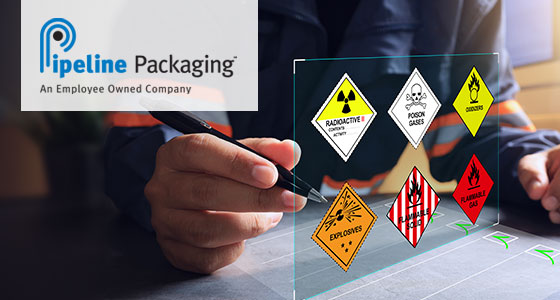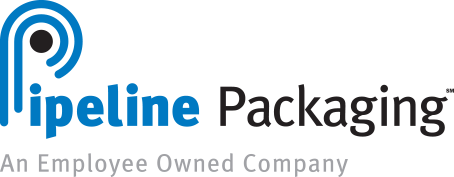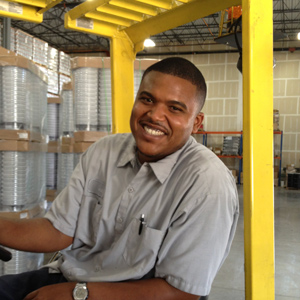The United States Department of Transportation (DOT) adopted UN packaging requirements in 1990 to reinforce safety, protect the environment, and support commerce between nations.
If your product is flammable, radioactive, toxic, or hazardous, you’re probably familiar with these standards. Missing any of these important obligations can compromise shipping safety and carry some costly consequences.
From accidental spills to routine inspections, the DOT can issue fines ranging from $900 to more than $45,000 for infractions against UN packaging requirements. With the need for safety and the looming presence of regulatory agencies, it’s never been more important to consult with the experts at Pipeline Packaging to help determine the appropriate solution for your products.
It’s all in the label
Ensuring safe transport and avoiding costly fines means making sure every detail of your packaging system meets UN packaging requirements. But how do you create the right checklist to guarantee there are no missteps?

The answer is all in the label. Every necessary detail about hazardous material packaging is readily displayed on the UN packaging label.
What might seem like just a jumble of letters and numbers is actually a guide that can help you determine where your packaging succeeds and where it falls short in terms of regulations and safety. In one combination of letters and numbers, you can learn the container type, construction material, closure style, hazard level, and even the packaging manufacturer.
These specifications not only help you provide that extra layer of safety to protect those handling the materials during storage and transit, but also reduce your risk of citations and fines.
Using the code on the UN label, individuals facing a package with unknown contents, or even an accidental spill, are instantly equipped with the information they need to handle any emergencies with the right sensitivity and treatment.
For more information about the UN certification labels, you can view our UN/Hazmat Markings Guide.
Understanding customer responsibility
Will Parish has specialized in UN packaging requirements as director of regulatory affairs at Cleveland Steel Container, Pipeline Packaging’s parent-company, for almost 14 years. A chemist by trade, Parish spent a large part of his career with industry-leading paint and aerosol companies before getting into packaging.
By understanding the landscape through the lenses of both the hazardous material and packaging industries, Parish helps Pipeline customers find the perfect solutions that comply with necessary regulatory standards.
“Ultimately, it’s the customers’ responsibility to make sure they’re meeting UN packaging requirements,” said Parish. “The larger corporations usually have in-house packaging experts to walk them through the process. But for many smaller companies, that simply isn’t an option. With fines increasing annually, getting it right is critical. So, we’re there to provide appropriate guidance.”
Customers provide Pipeline Packaging with a data sheet detailing the chemical makeup and qualities of the products they’re looking to ship. Using their expertise in UN packaging requirements, Parish and other experts at Pipeline develop individualized recommendations geared toward that specific product.
“Even with the most challenging requirements, our experts know how to employ complex formulas to draw the right calculations and find something that doesn’t just do the job, but does it with maximum safety and security,” he added.
Spreading awareness
Parish, along with other representatives from Pipeline Packaging and its associated companies, provide training to customers about the details involved in UN packaging requirements and their importance.
“What many customers don’t understand is that agencies like the DOT can come by and investigate your packaging systems at any time, whether or not you experience an accident,” said Parish. “Through our training, we hope to educate customers so they can protect themselves and others to the utmost degree.”
These training sessions go beyond presentations, and often include hands-on assessments of clients’ operations and follow-through demonstrations.
“Meeting UN packaging requirements means paying close attention to the little details,” said Parish. “Things like an old crimper can leave a partial seal on your packaging that’ll ultimately lead to a leak or worse. Even neglecting to follow the required step-by-step instructions without precision can increase the risk of an accident.”
A risk not worth taking
Kevin Martin serves as vice president of operations for Hazmatpac, a subsidiary of Pipeline Packaging that specializes in UN packaging requirements. Prior to joining the Pipeline Packaging family, he spent a decade as a packaging engineer, gaining hands-on experience with creating and testing packaging systems.
“It’s like speeding on a highway,” said Martin. “You can ship things illegally by skirting regulations until you have an accident or get caught.”
Whatever the case, Pipeline knows the potential consequences aren’t a risk worth taking.
One customer, Martin shared, discovered leaking cans while transporting a very pungent hazardous chemical. The customer tried to mail them back to the supplier without cleaning or storing them properly. When a couple ounces of the substance leaked onto the plane, it led to an investigation that ended with a $14,000 fine.
“My best advice for packaging hazardous materials is always verify what you’re doing is correct with the experts,” said Martin. “Whether it’s just a consultation or actually providing the packaging solution, let the professionals guide you through the proper UN packaging requirements.”
Rest assured with the experts at Pipeline Packaging
There’s a lot to consider when selecting the right supplier to meet your packaging needs and safety concerns. The experts at Pipeline Packaging and its affiliated companies will help simplify the process.
Our team is well versed in the many potential issues that play into every comprehensive packaging system. The professionals at Pipeline Packaging carefully evaluate your specific situation, accounting for anything from the nuances of UN packaging requirements to finding a more cost-effective solution — all to provide the best packaging for your needs.
“Companies like Pipeline Packaging and Hazmatpac are really the gold standard when it comes to meeting UN packaging requirements,” Martin added. “We third-party certify all our systems, so you know we’re not cutting any corners in terms of safety and compliance.”
We help customers navigate packaging regulations with ease thanks to our experience and expertise. We also have the distributor’s advantage and can connect you with more than 300 packaging suppliers to deliver the breadth of choice from primary packaging to those finishing touches like closures.
It’s simply what we do best
Combine Pipeline’s expertise and supply chain, and you can rest assured our team will provide a packaging system that will meet UN packaging requirements. And you don’t need to fear slip ups that could lead to outrageous fines or land you on a public violation list.
Parish appropriately summarized Pipeline Packaging’s commitment to its customers.
“The most rewarding thing about my job is making sure a customer is doing everything correctly,” he said. “It starts with choosing the right packaging, determining the right closure, and meeting the right safety requirements. When we pay attention to the details outlined in UN packaging requirements, we’re assuring customers’ packaging meets the highest quality and performance standards.”
There’s no better way to guarantee you’re meeting UN packaging requirements than working with a team committed to your safety and success. Contact us today to learn more.


